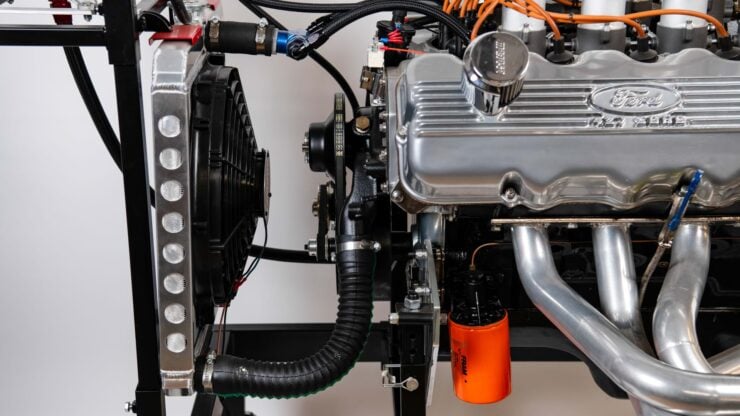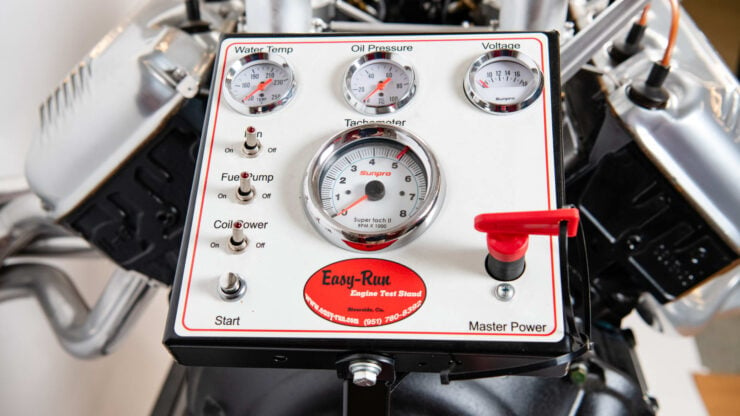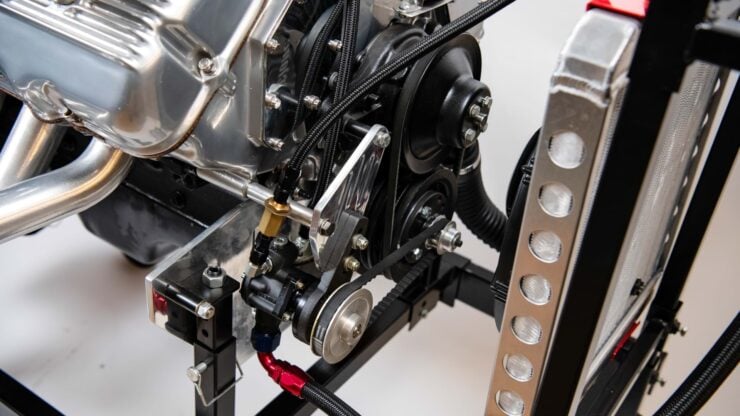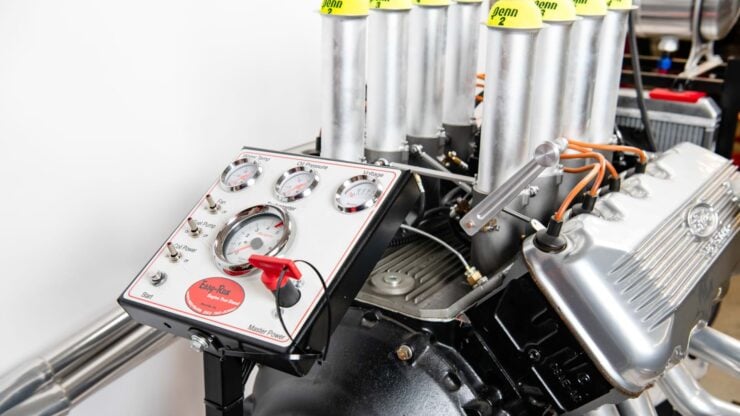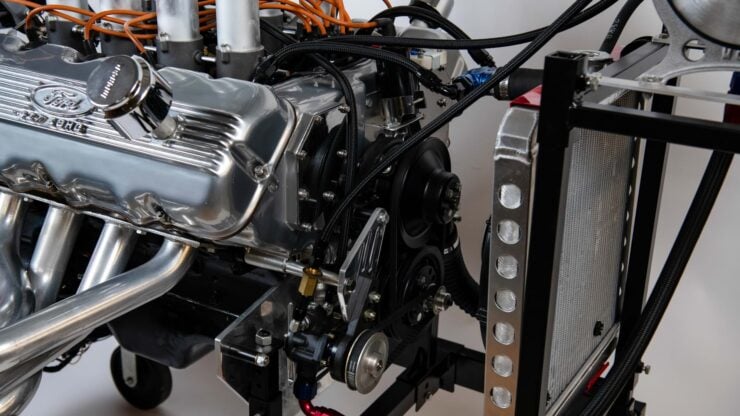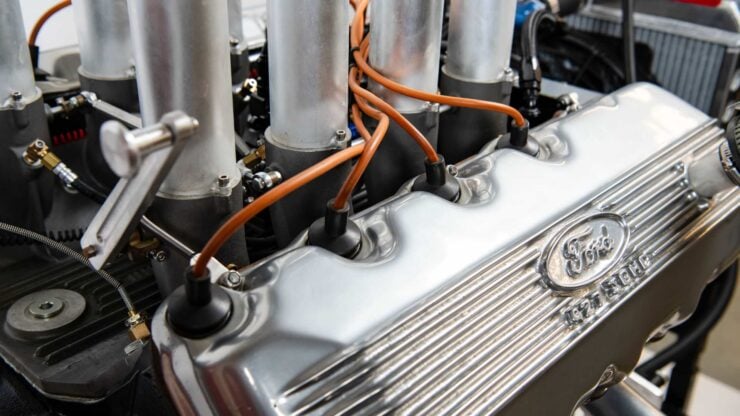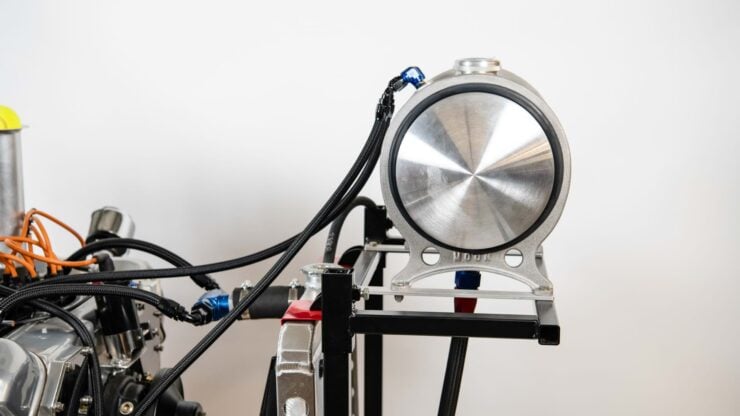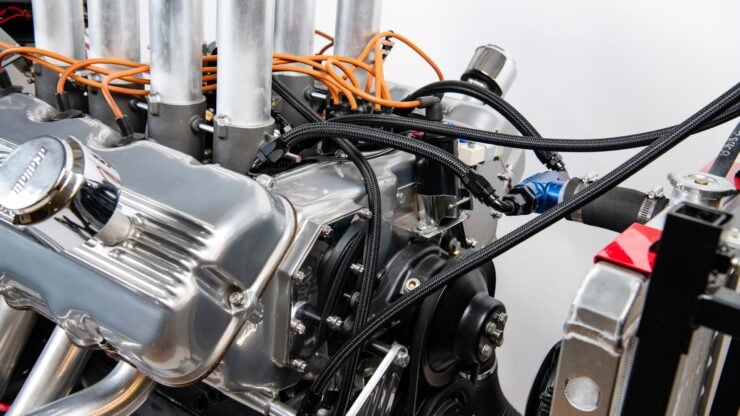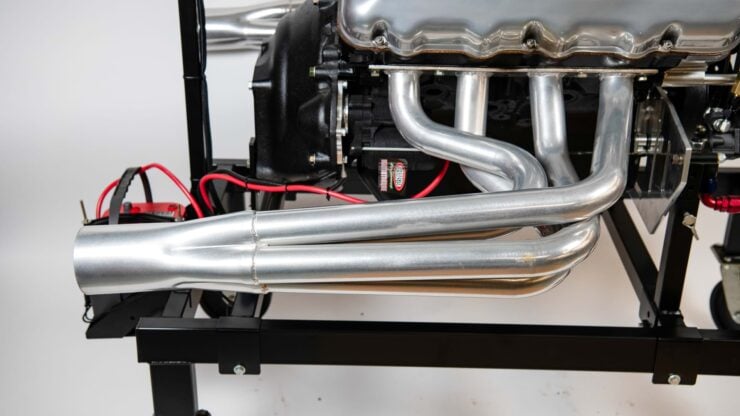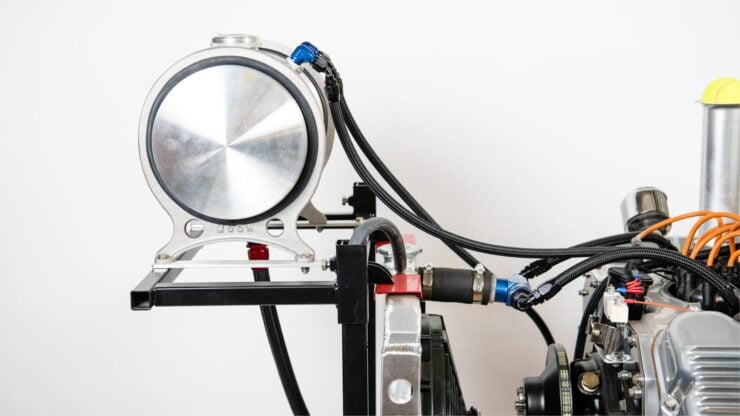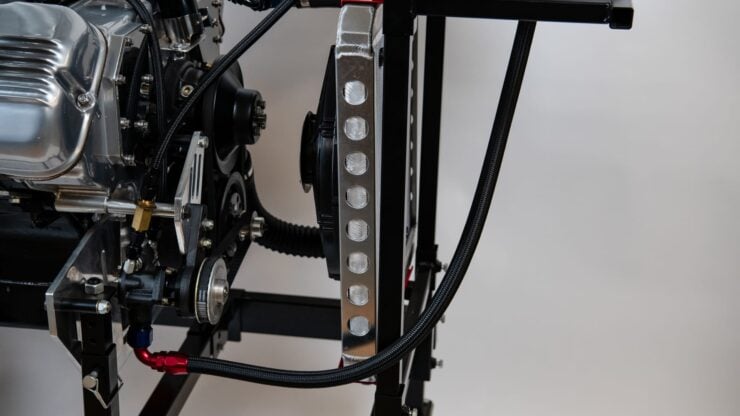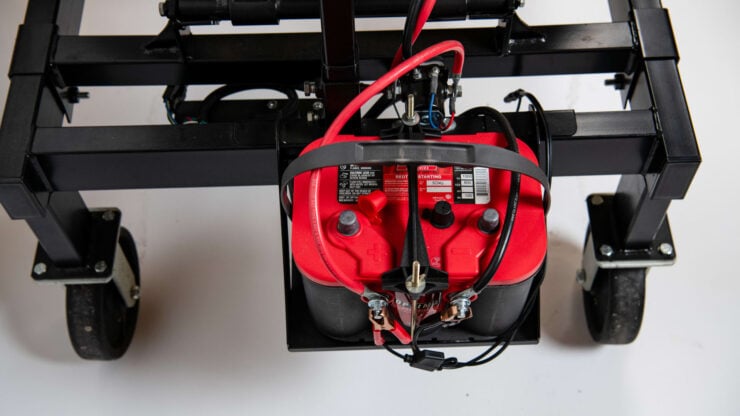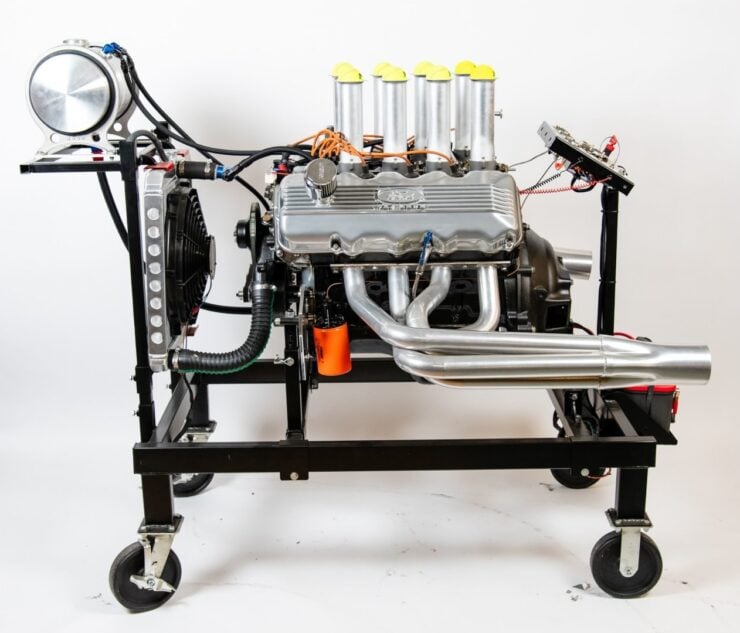This is a rare 1966 Ford 427 SOHC “Cammer” V8, an advanced engine developed by Ford in the 1960s with single overhead cams per bank, allowing it to rev far higher than its cam-in-block, OHV competitors.
The story of Ford’s Cammer V8 begins in the early 1960s, when NASCAR was a battleground for American manufacturers vying to assert dominance on track, which they all knew would translate to dominance in sales off the dealer’s lot.
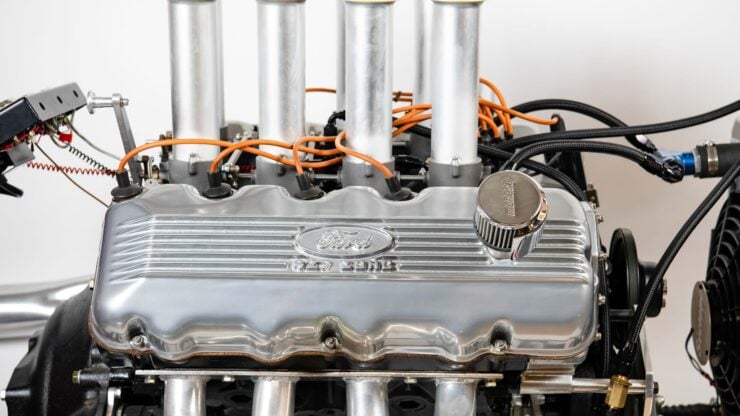

Ford’s Incredible Cammer V8
Chrysler’s introduction of the 426 Hemi in 1964 reshaped the competitive landscape of NASCAR, leaving rivals, including Ford, searching for a way to catch up. In response, Ford engineers turned to the reliable 427 FE big-block V8 as their foundation and gave it a revolutionary new upgrade.
This revolutionary upgrade was a technology that was already well-understood, and in use in many sports cars from Britain, Germany, and Italy. It was the use of an overhead cam. Almost all American engines of this era, and all of the American production V8s, used a cam-in-block which then actuated the overhead valves via pushrods and rockers.
Overhead cams do away with pushrods, and speaking in general terms, they allow higher RPM operation with more precise valve control. This is exactly what Ford needed if they were going to get more power out of the 427 FE big-block V8 – they couldn’t increase displacement any further due to NASCAR restrictions, but they could increase RPM and subsequently squeeze more power out.
The 427 SOHC Cammer was fitted with lightweight aluminum cylinder heads with large ports and oversized valves, which optimized airflow and improved heat dissipation. The overhead cams were chain operated, and this was perhaps the engine’s one key design flaw.
In fairness to the engineers working on the project, they had a small team, a compressed timeline, and a limited budget. The fact they they got the engine designed and out the door at all is a miracle, particularly given the volume of new parts that needed to be designed.
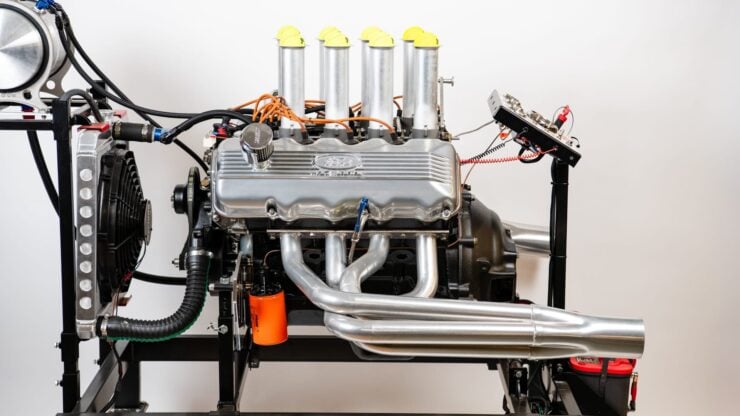


The timing chain issues were perhaps predictable, as Ford engineers had created a 6 foot long timing chain to operate both cams simultaneously. This was almost certainly due to the short development timeline, as development of a gear-driven cam system was deemed too time consuming to pursue.
On its release the Ford 427 SOHC Cammer V8 was rated at 616 bhp at 7,000 rpm and 515 lb ft of torque at 3,800 rpm – excellent figures by the standards of the mid-1960s.
Sadly the Cammer would never get to turn a wheel in NASCAR competition as the rules were changed to ban special racing engines, the series was supposed to be for stock cars not prototype specials.
The ban affected the Ford Cammer and the Chrysler 426 Hemi, Chrysler sat out the 1965 racing season in protest and Ford made do with their earlier 427 V8 “Wedge.”
Members of the Cammer drag racing community largely solved the issues with the engine, developing stretch-resistant chromoly cam chains, improved oiling, and more, eventually developing Cammers with up to 2,500 bhp.
Though Ford never put the Cammer V8 into a production car the engine has been fitted to a number of road-legal cars over the years, including this Ford Mustang Mach 1.
The Ford SOHC Cammer V8 Shown Here
The engine you see here is an original 1966 Ford SOHC Cammer that is currently fitted to an engine test stand, allowing it to run for demonstration purposes.
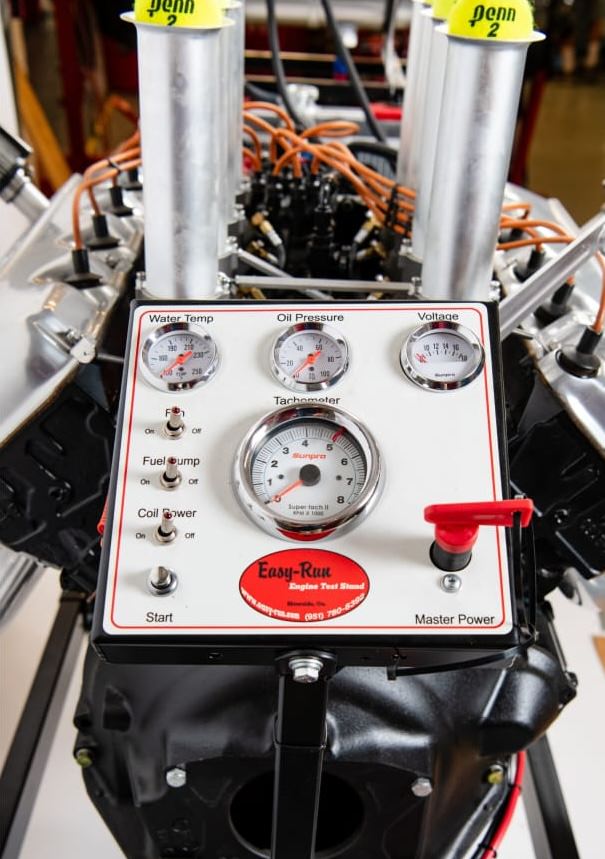


It will be up to the new owner whether they keep the engine fitted to the test stand or take it off and install it into a car. These engines are rare, but they have been fitted to a small number of cars, including one that now powers a Ford Mustang called “The Sin City Shaker.”
This engine and its stand are now due to roll across the auction block in mid-January as a single lot. If you’d like to read more or register to bid you can visit the listing here.
Images courtesy of Mecum
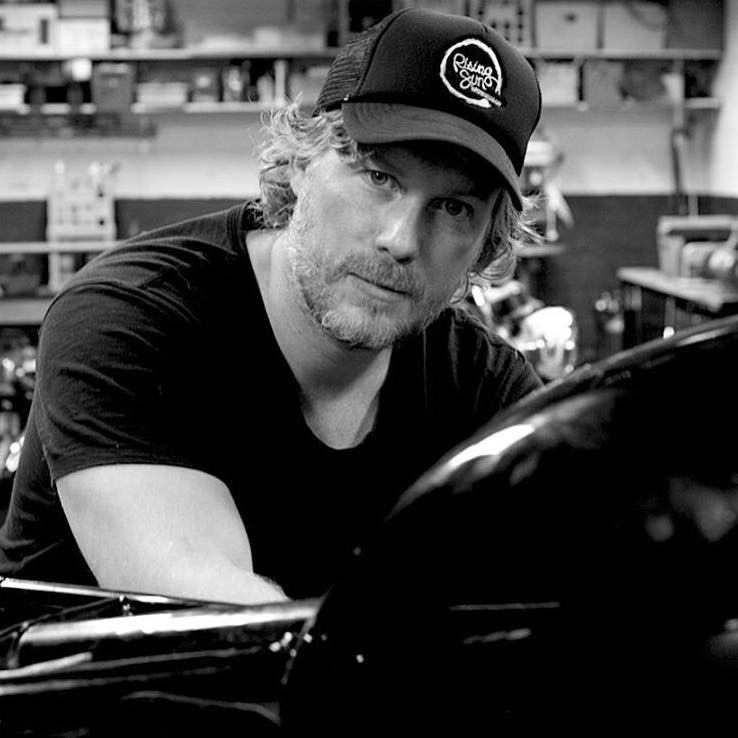

Articles that Ben has written have been covered on CNN, Popular Mechanics, Smithsonian Magazine, Road & Track Magazine, the official Pinterest blog, the official eBay Motors blog, BuzzFeed, Autoweek Magazine, Wired Magazine, Autoblog, Gear Patrol, Jalopnik, The Verge, and many more.
Silodrome was founded by Ben back in 2010, in the years since the site has grown to become a world leader in the alternative and vintage motoring sector, with well over a million monthly readers from around the world and many hundreds of thousands of followers on social media.


